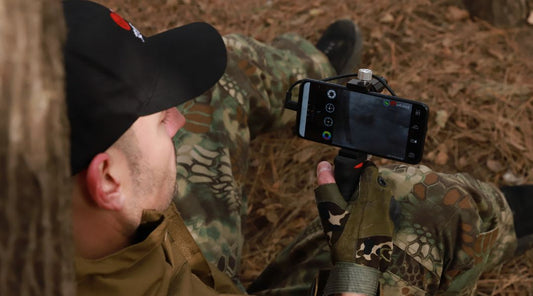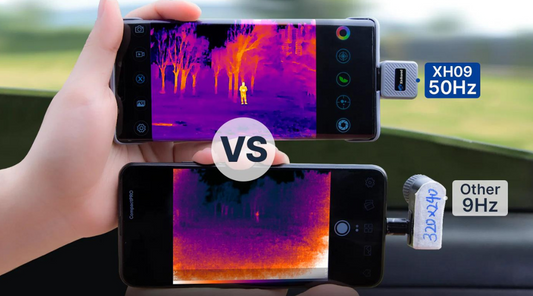Why Savvy Hunters Recommend Thermal Imagers for Hunting
In the ever-evolving world of hunting technology, savvy hunters are increasingly turning to thermal imagers to gain a distinct edge in their pursuit of game. These advanced devices have revolutionized the way hunters approach their craft, providing enhanced visibility, improved detection capabilities, and increased safety.

Advantages of Thermal Imagers for Hunting
1. Enhanced Visibility in Low-light Conditions
One of the primary reasons hunters opt for thermal imaging is their unparalleled performance in low-light conditions. Traditional scopes may struggle as daylight fades, but thermal cameras thrive in darkness. The technology relies on detecting heat signatures, allowing hunters to spot elusive prey with clarity even when natural light is scarce.

2. Improved Detection of Camouflaged Game
The camouflaged game poses a significant challenge for hunters relying solely on their eyesight. Thermal imagers excel in cutting through camouflage, revealing the hidden presence of animals that would otherwise remain unseen. This advantage gives hunters a strategic upper hand in tracking and targeting elusive prey.

3. Increased Safety and Situational Awareness
Safety is paramount in hunting, and thermal imagers contribute significantly to situational awareness. By detecting heat sources, these devices help hunters identify potential hazards or distinguish between animals and other objects in their surroundings. This added layer of awareness enhances overall safety during hunting expeditions.

Real-Life Success Stories
To underscore the effectiveness of thermal imagers, let's delve into real-life success stories shared by hunters who have embraced this technology.
Roysten, an experienced hunter, recounts a memorable night hunt where a thermal imager helped him spot a well-camouflaged fox. Without this advanced technology, the elusive game would have gone unnoticed, showcasing the game-changing potential of thermal imaging in the field.

Types of Thermal Imaging Technology
Understanding the different types of thermal imaging technology is crucial for hunters looking to invest in the right device.
1. Passive Infrared
Passive infrared thermal imagers detect the heat emitted by objects, converting it into a visible image. This technology is effective in various lighting conditions and offers a reliable solution for hunters seeking versatility.
2. Uncooled Microbolometers
Uncooled microbolometers are a common type of thermal imaging sensor. They operate without the need for cooling systems, making them more compact and energy-efficient. This technology is popular for its reliability and suitability for hunting applications.
3. Cooled Detectors
Cooled detectors, on the other hand, utilize a cooling system to enhance sensitivity and image quality. While bulkier than uncooled alternatives, cooled detectors offer superior performance, particularly over longer ranges.

Factors to Consider When Choosing a Thermal Imager
Selecting the right thermal monocular involves considering several key factors.
1. Range
Consider the range at which you typically hunt. Different thermal imaging monoculars have varying detection ranges, so choose one that aligns with your hunting preferences.
2. Resolution
Higher resolution means clearer images. For detailed identification of the game, opt for a thermal imaging monocular with sufficient resolution.
3. Battery Life
Long battery life is crucial for extended hunting trips. Choose a thermal imager that can endure the duration of your excursions without compromising performance. But if you choose Xinfrared thermal monoculars for a cell phone, you don’t need to worry about that. They don’t need a separate battery.
4. Ergonomics
Comfortable handling is essential for a seamless hunting experience. Choose a thermal imager with user-friendly controls and a design that suits your preferences.

Tips for Using Thermal Imagers Effectively
Maximizing the benefits of thermal cameras requires some practical know-how.
Proper Calibration
Regularly calibrate your thermal to ensure accurate readings. Calibration guarantees that the device accurately reflects the temperature differences in your environment.
Understanding Thermal Signatures
Familiarize yourself with the thermal signatures of different animals. This knowledge will help you distinguish between species and make more informed hunting decisions.

Comparison with Other Hunting Technologies
While thermal imagers have become a go-to choice for many hunters, it's essential to compare them with other technologies, such as night vision.
Advantages of Thermal Imaging over Night Vision
Thermal imaging has a distinct advantage over night vision by detecting heat rather than relying on ambient light. This makes thermal imagers more versatile in various conditions, especially in complete darkness.

Thermal imagers have earned their place as indispensable tools for modern hunters. From enhancing visibility in low light conditions to improving detection capabilities and increasing safety, these devices offer a myriad of benefits. As you explore the world of thermal imaging, remember to consider the specific factors that align with your hunting preferences. Embrace the future of hunting technology and elevate your hunting experience with the remarkable capabilities of thermal imagers.




